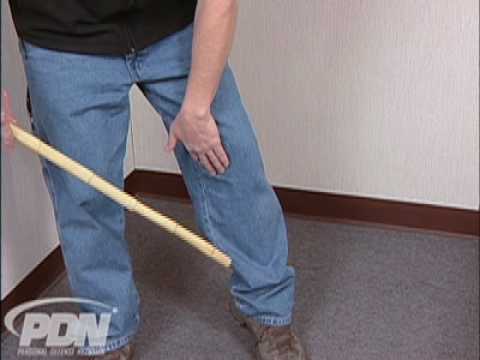These Everyday Items Can Quickly Become Improvised Self-Defense Weapons
- The baseball bat. For playing baseball, of course. Throw a couple of gloves and a ball in a plastic grocery bag for that time you run into your buddies for a friendly game of ball. And while you’re waiting…when a couple of hoodlums with knives come “sauntering” up to you, it might be a good idea to have that baseball bat handy. My personal choice is a T-ball bat, made of aluminum, and it works. Once again, you have to train with it, but I guarantee you’ll be just fine with some practice. Do they want you with knives? I assure you, the bat will deter them…one way or another.
- The cane. What a pleasant walking accouterment! Something to lean on, and help you brace yourself as you walk uphill. Oh, and remember those hoodlums we discussed in “number 1” here? Once more, the proper training and practice will have you serving those knives up to them ala carte. I prefer the ones made from aluminum to the wooden ones, although wood will work. These are just pure canes, now, not “sword” canes or other specially-outfitted devices.
- The umbrella. This one is a little riskier, for the sole reason that it must be sturdy. They make them, but you’ll have to do some searching for the really strong ones. As a striking or a stabbing weapon, you’ll have something to work with. If you wish to do some special work on them, just use your imagination.
- Walking stick. Different from a cane, due to the length. This one (unless you’re in New York City where nothing is considered weird) you may have to be in a different setting to employ. Nevertheless, that walking stick is really a staff, and there’s where real training will come in handy. Get a good one that is sturdy and somewhat ornate/art-decorated. This last feature will give you more of a cover, as unless you’re auditioning for a “shepherd” position or the lead role of “Moses” in the “Ten Commandments” remake, it’ll be hard to pass off your “staff” in an urban setting.
- The crowbar. This one will have to stay in the vehicle. Be smart: make sure it’s not the only tool in the back seat. Always think ahead in that regard. If you’re in the trades, it’ll be a little simpler for you.
With all of these examples, the crowbar and the baseball bat are the ones you’ll have to leave in the car. The rest you can carry with you with relative impunity, with the Walking Stick being the only one that may arouse attention in an urban or suburban setting. Your objective is not to be a Ninja: it is to be a camouflaged citizen not looking for any trouble. These suggested weapons are to allow you to have a “distance” weapon: a tool to be able to deal with someone who wishes to hurt you.
In the following video, pay attention to the strike zones and areas on the body that will inflict the most damage to your attacker. Accurately striking in the right areas on the body will drop your attacker and give you time to distance yourself.
Jeremiah Johnson is the Nom de plume of a retired Green Beret of the United States Army Special Forces (Airborne). Mr. Johnson was a Special Forces Medic, EMT and ACLS-certified, with comprehensive training in wilderness survival, rescue, and patient-extraction. He is a Certified Master Herbalist and a graduate of the Global College of Natural Medicine of Santa Ana, CA. A graduate of the U.S. Army’s survival course of SERE school (Survival Evasion Resistance Escape), Mr. Johnson also successfully completed the Montana Master Food Preserver Course for home-canning, smoking, and dehydrating foods.
Mr. Johnson dries and tinctures a wide variety of medicinal herbs taken by wild crafting and cultivation, in addition to preserving and canning his own food. An expert in land navigation, survival, mountaineering, and parachuting as trained by the United States Army, Mr. Johnson is an ardent advocate for preparedness, self-sufficiency, and long-term disaster sustainability for families. He and his wife survived Hurricane Katrina and its aftermath. Cross-trained as a Special Forces Engineer, he is an expert in supply, logistics, transport, and long-term storage of perishable materials, having incorporated many of these techniques plus some unique innovations in his own homestead.
Mr. Johnson brings practical, tested experience firmly rooted in formal education to his writings and to our team. He and his wife live in a cabin in the mountains of Western Montana with their three cats.
This information has been made available by Ready Nutrition
